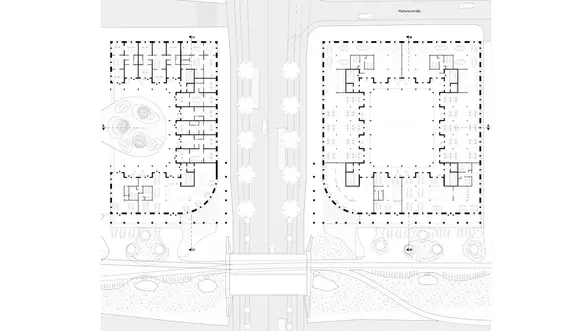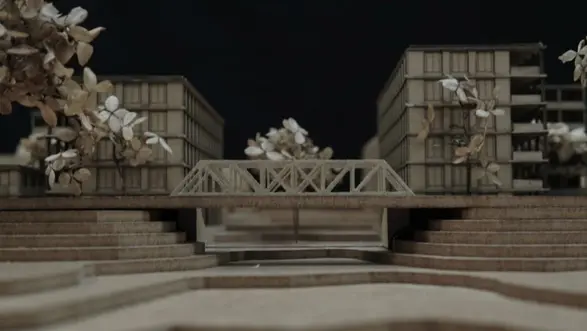City Entrances




Schiersteiner Straße towards the city center
07.02.2022 - For several years now, the City of Wiesbaden has been thinking about the so-called city entrances and developing urban planning concepts to upgrade them. Architecture students from RheinMain University of Applied Sciences have now presented designs as part of their bachelor's theses on how a part of Schiersteiner Straße could be used as an example to create an urban identity-creating connection between the outskirts of the city and the city center, while at the same time having a future-oriented usage structure.
"Large parts of the inner city have a largely uniform appearance. In contrast, some of the outer areas and connecting zones between the outskirts of the city and Wiesbaden's core city appear disorganized and lacking in urban spatial conciseness. In 2012, the city of Wiesbaden set an impulse to pay greater attention to this situation and to remedy deficits. One of the areas under investigation is the urban space of Schiersteiner Straße, which students have now dealt with in their final theses," explains Prof. Karin Damrau from the Architecture degree program.
Robust usage structures for the future
In the area of the historic railroad bridge, which crosses Schiersteiner Straße via a bridge, a future-oriented urban building block with mixed use (residential, working, gastronomy, parking, etc.) was to be planned on both sides of the south-western access road, which would provide a relevant impetus for urban development both in terms of urban space and its usage structure. "We were looking for a concise piece of Architecture that develops not least from a consideration of the sequential experience when entering or leaving the city and takes a stance on the height development of the buildings in this area. In addition to urban spatial considerations, the utilization structure and its future viability should also be considered. Because against the backdrop of the changing world of work, social, traffic and not least climatic challenges, the implementation of robust usage structures is also essential," says Prof. Damrau.
Old railroad embankment is partially integrated
At the heart of Lukas Fey's design are two so-called plinth storeys facing the old railroad line: "With my concept, I want to make the railroad embankment, on which a cycle path is planned, accessible to pedestrians as a threshold space and thus an experience, in order to create a connection between the two previously separate areas. The base storeys with restaurants, a club and a bicycle repair shop are the connecting element in the urban building block and thus in the city."
The railroad embankment - which in this case is to become both a cycle and leisure path - also plays a central role in Steffen Klippel-Korn's concept. "It was important to me that public access to the buildings is possible and that this open character allows me to bring the green space of the embankment into the inner courtyards of the buildings. The communicative, interactive courtyards form the center of my work."
Intensive contact with Wiesbaden city planning office
The bachelor theses were supported by impulse lectures and insights into the city's planning considerations by the Wiesbaden City Planning Office, in particular by Ms. Sabine Elberfeld, Department Head of Public Space and Urban Design. "The results include very independent contributions that are forward-looking both in terms of their urban design and their convincing usage profiles," summarizes Prof. Damrau. The bachelor theses were supervised by Prof. Karin Damrau, Prof. Isabella Leber, Prof. Sascha Luippold and Prof. Günter Weber from the Faculty of Architecture and Civil Engineering.